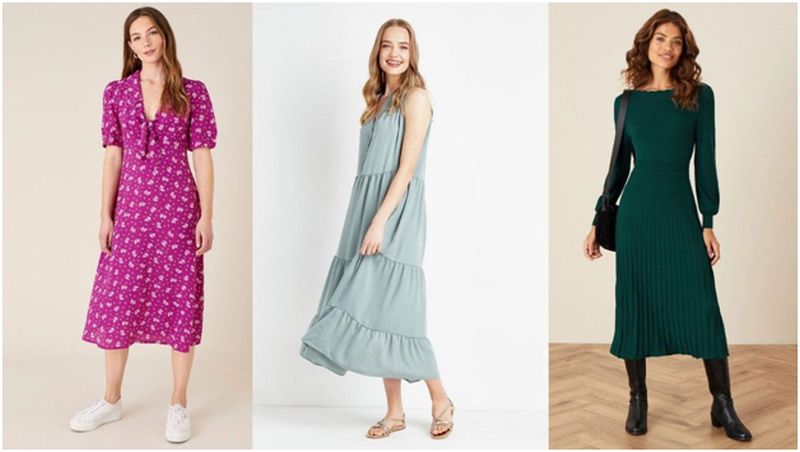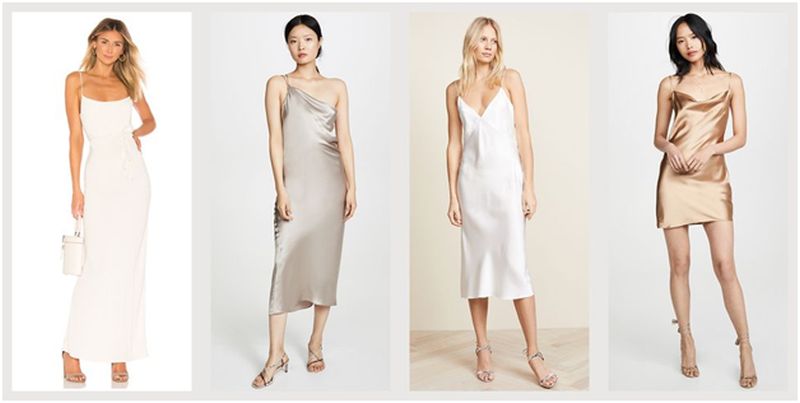Is your wardrobe full of dresses? Every woman dreams of a closet with frocks in different styles and lengths. This clothing piece has undergone an evolution throughout history, with some of the trends having a major comeback today.
The fashion choices for females are unlimited, ranging from slip and maxi dresses to body-con and Bardot frocks. These garments are composed of multiple parts, which women should understand so as to choose the most flattering style for their figures.
We hope this guide provides you with helpful information on frocks, such as those of the London Times collection.
1. Dress parts
Before getting familiar with the dress types sold by London Times, each woman is supposed to make a distinction between different parts of this garment. The main parts include the bodice, sleeves, skirt, neckline, hemline, train, and straps. It’s important to note that not all models are necessarily composed of these parts, as some lack sleeves, whereas others have no straps.
Moreover, sleeves are the components that cover the arms, which can be short, long, or mid-length. Depending on the style of the frock, the sleeves are designed to be either loose or tight. Anyhow, sleeves are classified into two categories, set-in, and non-set-in sleeves.
Set-in sleeves are created to join the bodice’s side seams right at the underarm, such as peasant, bishop, puffed sleeves, etc. Conversely, not-set-in sleeves represent a part of the bodice, like raglan, kimono, dolman sleeves, and others.
Another important component of dresses is the bodice, referring to the piece of fabric that covers the area from the neck to the waist. In contrast, the skirt refers to the bottom part covering the area from the waist down. It can be of mini length, knee length, floor length, ankle length, etc. Also, the skirt can be straight, asymmetrical, A-line, pencil, bubble, tulip, or layered.
Furthermore, the waistline is the part that joins the skirt and the bodice, which is in charge of providing the frock with a shape. It’s an essential component, as it decides how the garment works on your silhouette. For this purpose, there are several types of waistlines.
The natural waistline, as the name explains, sits at the natural waist of wearers. The empire waistline is placed right underneath the bust. Conversely, the dropped waistline is placed at the top of the hips. Some waistlines are shaped in the form of the letters V and U, either in the front or back of the frock.
In addition, females should make a distinction between a neckline and a hemline. The former is the line at the top of the dress, while the latter is created by the lower edge. The neckline seems to be the first thing that attracts the attention of people. Therefore, women are provided with various necklines to consider, such as asymmetric, round, strapless, halter, V necklines, and others.
Hemlines have undergone numerous changes during the past years owing to the evolution of fashion. Generally, the hemline is chosen in accordance with the occasion, age, and fashion style. It’s the component that classifies a frock as mini, midi, or maxi. Go to this webpage, to learn how to avoid hem edges that crease and curl on clothes.
In contrast, the frock train stands for the portion of fabric that falls behind the person wearing it. Nowadays, the train is only used in wedding dresses and gowns.
2. Slip dresses
The slip dress is undoubtedly essential in every collection like that of the London Times. Although it was worn as an undergarment in the seventeenth century, it’s has become a fashionable piece of clothing in recent times. It’s both stylish and comfortable, offering unlimited layering possibilities.
Additionally, these frocks look amazing when styled with fashion items like heels, strappy sandals, an oversized clutch, and a blazer. The slip dress has achieved significant popularity in the 1990s and has had a major comeback recently.
3. Body-con dresses
Another frock type that females can find in the London Times collection is the body-con style.These dresses are sleek, striking, powerful, and well-structured, created to hug the body curves of wearers. The body-con style is predicted to endure in the years to come due to the innovation of new materials and fabrics.
As far as styling is concerned, a body-con dress looks powerful in combination with stiletto heels. Another accessory to consider adding is either a statement purse or statement handbag. Make sure you use accessories in bold colors.
4. Maxi
Maxi dresses are also part of the London Times collection. Make sure you visit their website to see various frock styles for any occasion. Maxi frocks are specific for their floor-length and dramatic look. These are adored by women of different shapes and sizes.
Moreover, females are offered a multitude of prints, fabrics, and textures. A maxi dress is best combined with unique jewelry, sandals, flats, and basket bags. The maxi style is a retro symbol of fashion, introduced in the 1970s by the hippies. It’s still incredibly popular today.
5. Bardot dresses
Females are recommended to have a Bardot frock in their wardrobes, which first became popular in the 50s owing to Bridgette Bardot. It’s specific for its off-the-shoulder neckline and looks stylish with a broad belt, a statement necklace, or hoop earrings.
Conclusion
Modern women deserve to look fashionable and classy.
The right frock can do wonders!
Article Submitted By Community Writer






